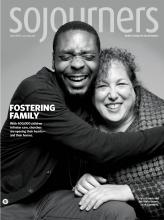MUSIC IS OFTEN regarded and consumed as something that fills a space—the chords of an organ resounding off the walls of a sanctuary, the beats of a drum circle riding on the breeze through a park, the harmonies of an orchestra flowing from my headphones into my ears as I write. Music even transcends physical spaces to permeate the heart and the soul with emotion.
In Music as Prayer, pastor and musician Thomas H. Troeger invites the reader to cherish and engage in music as an act of prayer. Taking into account the metaphorical, scientific, and practical aspects of music-making, Troeger illustrates the power of music to not only fill a space but to also clear a way for meaning and creativity. Building upon Henry Ward Beecher’s metaphor of a boat stuck on the shore, Troeger describes how the “mighty ocean-tone” of a church organ brings the “tide” needed to lift up the members of the congregation and set them free from the shore.
In what Troeger calls a “dialogic process,” music lends rich metaphors to language and changes the effect of language upon the listener. The same song played in two distinct styles can convey two completely different sets of emotions.
From the ancient flute invented 35,000 years ago to today’s smartphone streaming songs on demand, music has occupied a central part of the human story. The mystery of music lies in the way that sound waves can blend into melodies that speak directly to the human yearning for wholeness. Creating space for both celebration and lament, music has the capacity to hold opposing emotions in the same breath. Music can provide release from suppressed inner tension and give voice to even the most unspeakable emotions.
Read the Full Article
